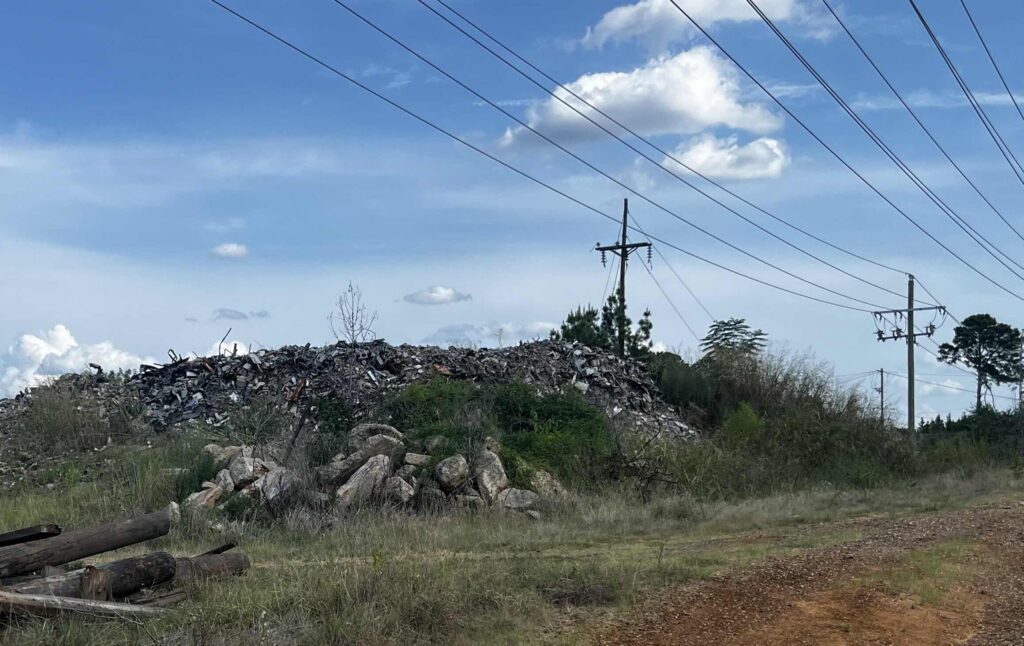
Last week the Gazette reported that a November 2023 grant request by the Town of Farmerville represented to the United States Government that the town needed A$396,000 to address three projects dealing with environmental cleanup. The grant request asked the government to provide that money from the taxpayers. The three projects were Hill Oil Company, Roy Allen Station and the Metz Motel. All three were identified as needing remediation due to historical fuel and oil contamination but the Metz Motel was specifically identified as containing asbestos, a practically invisible fibrous mineral mined and used in many commercial and residential applications including insulation, flooring tile, roofing shingles and many other building and manufacturing products. Free floating asbestos can be deadly to those exposed to it.
The highest asbestos exposure risk is through workplace exposure. While the U.S. is no longer mining asbestos or using it in products, the risk of asbestos exposure is still particularly high for blue-collar workers. Older schools, buildings and homes built before the 1980s, and military bases also pose a risk of exposure. The Metz motel in Farmerville was built as early as the mid 1940s and contained asbestos.
People who live with workers who handled asbestos products also risk secondhand exposure. There are also environmental health risks for those who live near production facilities that worked with asbestos and for those who lived near once active mines.
Even though the town knew that the motel contained asbestos and without properly disposing of the asbestos through an approved remediation process, Mayor Crow ordered the motel demolished with the asbestos contaminated material being hauled to a police jury parish dump site near Rodeo Drive in Farmerville, adjacent to a residential area. The tiny, invisible to the naked eye, fibers of asbestos were thus not contained and presumably remain a health hazard until properly disposed of.
According to responses from both the police jury and the town it is clear that the mayor requested permission to use the police jury’s parish dump site within the town limits for the purpose of dumping the debris from the Metz Motel and was granted that permission by the police jury. The police jury helped move the asbestos contaminated material to its current resting place. The mayor knew the material contained asbestos and either intentionally misrepresented that critical fact to the police jury – the presence of asbestos in the material – or the police jury was complicit with the town in illegally transporting and storing such a dangerous material without proper containment. If the mayor knew about the asbestos, he had a duty to disclose this to the police jury. One way to commit fraud under Louisiana law is to remain silent when there is a duty to speak. Mayor Crow knew asbestos was in the motel because at the time of demolition he had just requested hundreds of thousands of dollars in a grant from the federal government to address that fact, so he either deliberately misrepresented that fact to the police jury or the police jury knew and participated anyway. Either way, asbestos fibers are apparently floating freely through the area and that should concern everyone.
To compound the financial damage to the town caused by his conduct, Mayor Crow used public funds, employees and equipment to demolish the Metz motel, a privately owned piece of property. It is not clear if he also used prisoners. Everyone he used in the demolition and transport, and also citizens traversing the area, were potentially exposed to the asbestos, because the asbestos was not “contained”.
Every responsible public official knows that expending public funds to perform work on private property is prohibited by the Louisiana Constitution. The proper method to use in remediating blighted property is to condemn it publicly, give the owner notice of the condemnation and a time period to bring the property into compliance with necessary standards, in default of which the governing authority causes the work to be done properly and liens the property for the public funds so expended. In this manner the cost of clean-up is borne by the owner of the property.
Because of the danger posed by asbestos exposure the U.S. Environmental Protection Agency has been collecting data on recent exposure. In October 2023, the agency finalized a rule requiring manufacturers that used asbestos between 2019 and 2022 to provide data to the agency. Manufacturers were required to report quantities of asbestos manufactured or processed, types of use and employee data by May 24, 2024.
Living near an asbestos-contaminated mine or processing facility risks environmental exposure. One of the worst environmental disasters in U.S. history is the Superfund site in and around Libby, Montana. Vermiculite mining contained traces of asbestos that contaminated the surrounding area for miles. This led to the deaths of hundreds of Libby residents.
The Gazette will continue to follow this story. If you have information on this topic, please contact the Gazette.
 fgazette.com Community news site for Union Parish Louisiana
fgazette.com Community news site for Union Parish Louisiana